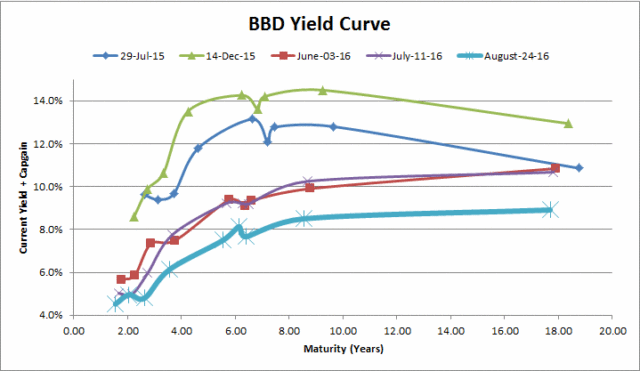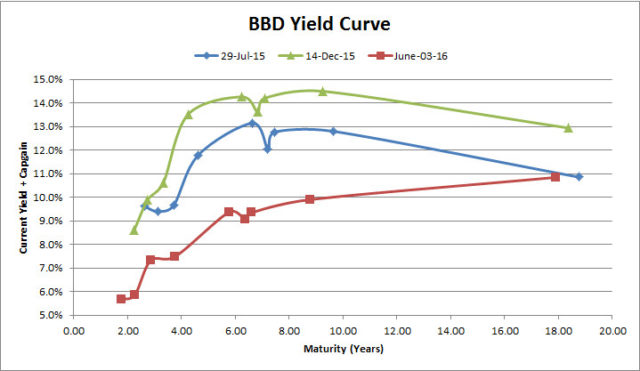It is virtually a given now that Bombardier will announce that Delta Airlines has ordered a bunch of C-series jets. The announcement will probably be Thursday as there is no reason for them to move back the earnings announcement unless if they want to have a huge feel-good party for their annual general meeting on April 29th.
However, in terms of pricing of securities, “buy the rumour, sell the news” is the cliche to follow here. Most (if not all, or even an over-reach) of this news has been baked into current market pricing, which means that investors will now have to focus on the finer details, such as: how much of a price concession did Bombardier make in order to ink the sale on the contract?
These price concessions inevitably will affect profitability of the overall entity, and while it is nice to sell jets at a near break-even profit margin, the corporation needs to eventually make money.
However, Bombardier has solved one of their massive problems which was a chicken-and-egg type matter: they now have an American purchaser of their jets, which is a lot better than how things were portrayed for them half a year ago. More importantly, they are current in a position to raise capital again from the public marketplace.
I will point out in a reduced profit scenario that the security of income from the preferred shares (or even the bonds) looks more favourable from a risk-reward perspective than the common shares. Back in February, investments were selling preferred shares (the 6.25% Series 4) at 18% yields, but today it is at a much more respectable 10%. I’d expect this to get around 7-8% before this is done.
My investment scenario is pretty much resolving to my initial projections – just have to continue to be patient and then the decision is going to be whether I sell and crystallize the gain, or just be content to collect coupons and sit on a large unrealized capital gain.
(Update, April 28, 2016): As expected, Bombardier has announced that Delta has purchased 75 C-Series jets with an option to pick up another 50. This is a huge win for the corporation, but again, the question remains: how much money will they actually be able to make when they produce these things? Let’s hope they’re able to actually get the production lines going and crank them out without issues, unlike their Toronto street cars…
I’ve glossed over their Q1-2016 financial statements, and as expected, they still show an entity that is bleeding cash, albeit they have a lot of liquidity available – US$4.4 billion in cash and equivalents when you include Quebec’s $1 billion investment. They’ve got US$1.4 billion due in 2018 on their March 2018 debt (coupon 7.5%) but this is trading at around a 6.5% YTM at the moment so they can refinance it.
The company expects the C-series program will consume $2 billion further cash for the next five years, of which the province of Quebec has generously chipped in a billion. After that they expect things to be cash flow positive. Who knows if this will happen!
(Update, April 29, 2016) The market has “sold the news” as I expected. I generally believe the common shares will have a significant drag compared to the historical charts due to dilution, but the preferred shares and debt should normalize to “reasonable” yield levels simply due to their standing being in front of line on the pecking order. This is assisted with the Beaudoin family’s very rational self-interest in maintaining their control stake with the Class A common shares which will translate into outwards cash flows being paid as scheduled. If the Government of Canada decides to chip in a billion dollars, it is icing on the cake, but it is not required as Bombardier will be busy for at least the next four years producing C-series jets. Assuming they can actually execute on the production and the jets live up to their reported (superior to competition) specifications, they should be good to at least pay off debts and preferred share dividends.
Each additional order of C-Series jets will be making profitable margin contributions and as these orders continue to come in, the common shares, preferred shares and debt will ratchet up, accordingly. I still believe they are under-valued but not nearly as much as they were late last year when everybody was in doom and gloom mode! The preferred shares are the sweet spot in terms of risk-reward.


